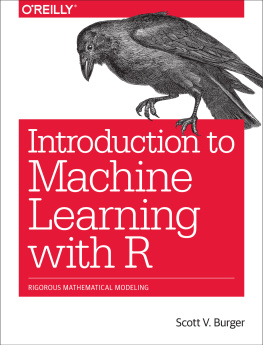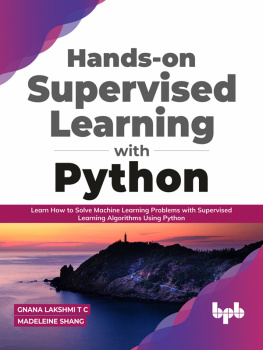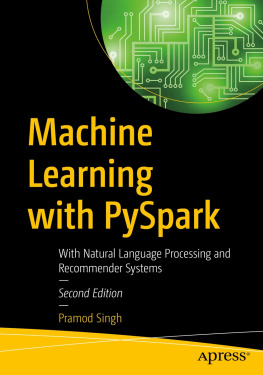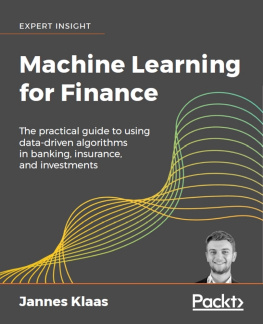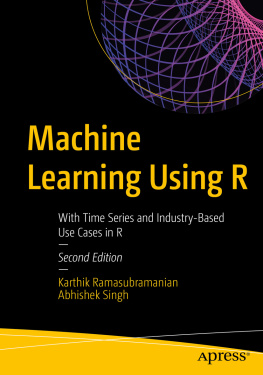Scott V. Burger - Introduction to Machine Learning with R: Rigorous Mathematical Analysis
Here you can read online Scott V. Burger - Introduction to Machine Learning with R: Rigorous Mathematical Analysis full text of the book (entire story) in english for free. Download pdf and epub, get meaning, cover and reviews about this ebook. year: 2018, publisher: O’Reilly Media, genre: Computer / Science. Description of the work, (preface) as well as reviews are available. Best literature library LitArk.com created for fans of good reading and offers a wide selection of genres:
Romance novel
Science fiction
Adventure
Detective
Science
History
Home and family
Prose
Art
Politics
Computer
Non-fiction
Religion
Business
Children
Humor
Choose a favorite category and find really read worthwhile books. Enjoy immersion in the world of imagination, feel the emotions of the characters or learn something new for yourself, make an fascinating discovery.
- Book:Introduction to Machine Learning with R: Rigorous Mathematical Analysis
- Author:
- Publisher:O’Reilly Media
- Genre:
- Year:2018
- Rating:3 / 5
- Favourites:Add to favourites
- Your mark:
Introduction to Machine Learning with R: Rigorous Mathematical Analysis: summary, description and annotation
We offer to read an annotation, description, summary or preface (depends on what the author of the book "Introduction to Machine Learning with R: Rigorous Mathematical Analysis" wrote himself). If you haven't found the necessary information about the book — write in the comments, we will try to find it.
Finally, youll delve into the frontier of machine learning, using thecaretpackage in R. Once you develop a familiarity with topics such as the difference between regression and classification models, youll be able to solve an array of machine learning problems. Author Scott V. Burger provides several examples to help you build a working knowledge of machine learning.
Explore machine learning models, algorithms, and data training
Understand machine learning algorithms for supervised and unsupervised cases
Examine statistical concepts for designing data for use in models
Dive into linear regression models used in business and science
Use single-layer and multilayer neural networks for calculating outcomes
Look at how tree-based models work, including popular decision trees
Get a comprehensive view of the machine learning ecosystem in R
Explore the powerhouse of tools available in Rscaretpackage
Scott V. Burger: author's other books
Who wrote Introduction to Machine Learning with R: Rigorous Mathematical Analysis? Find out the surname, the name of the author of the book and a list of all author's works by series.

